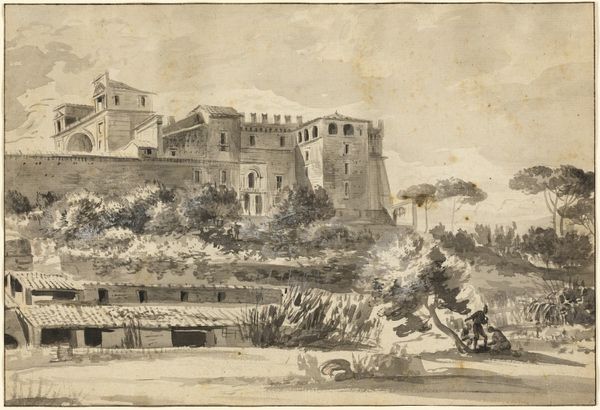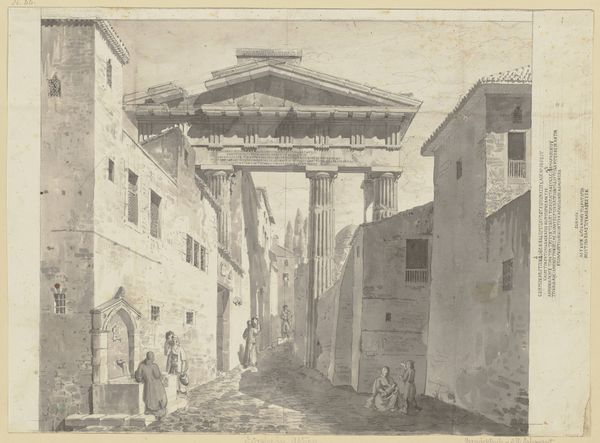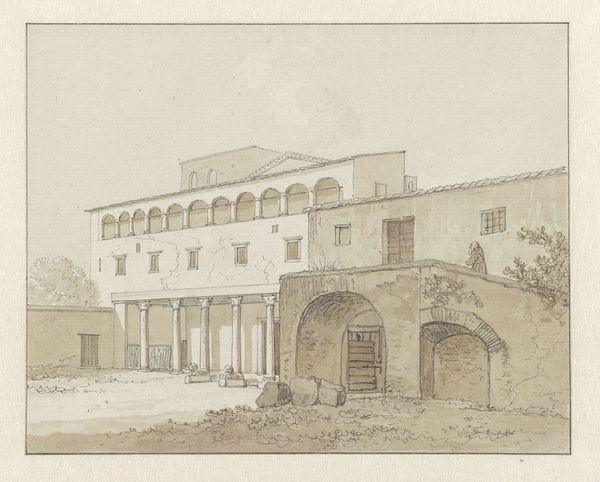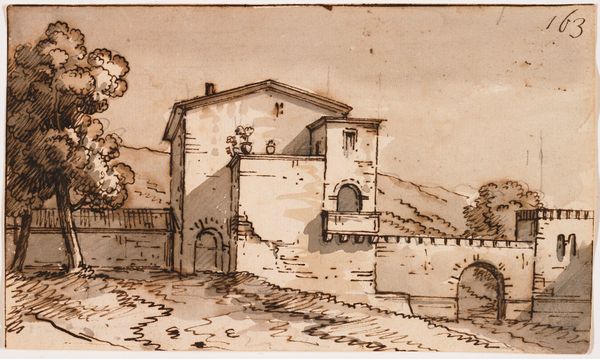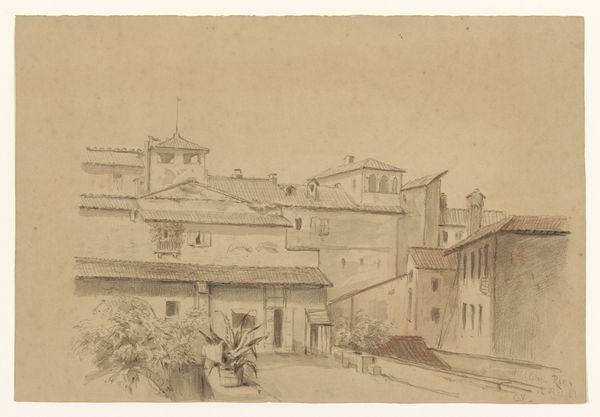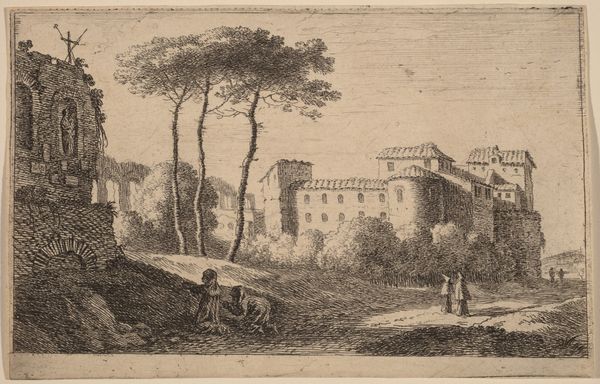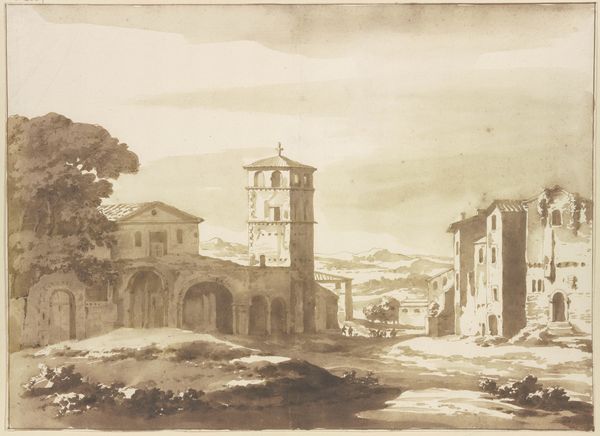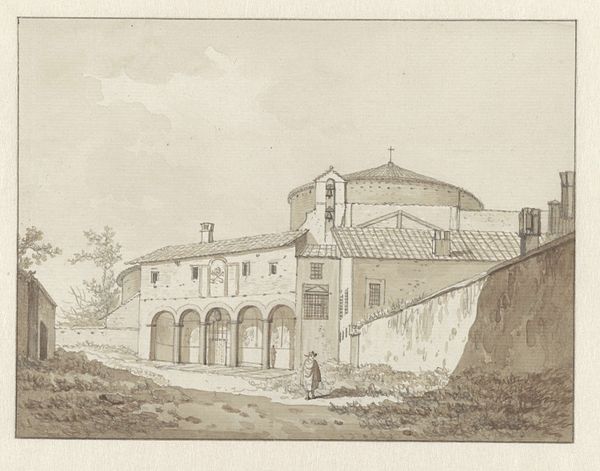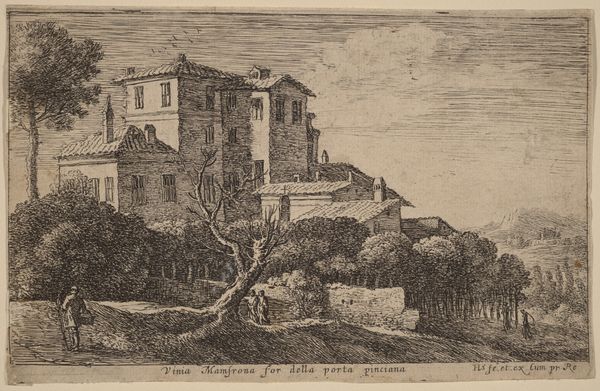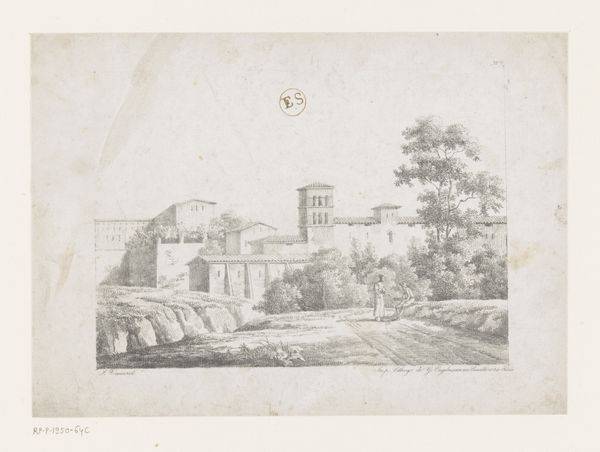
drawing, watercolor, ink, architecture
#
drawing
#
neoclacissism
#
landscape
#
watercolor
#
ink
#
watercolour illustration
#
history-painting
#
architecture
Dimensions: overall: 23.2 x 30.3 cm (9 1/8 x 11 15/16 in.)
Copyright: National Gallery of Art: CC0 1.0
Editor: This is Angelo Uggeri’s “Tomb of Scipios,” from 1803, created with ink and watercolor. There's almost a staged quality to it; the figures seem posed amidst the architectural ruins. What captures your attention in this piece? Curator: I'm drawn to the materiality, and how it implicates the viewer in Uggeri’s own 19th-century consumption of antiquity. The sepia ink, the delicate watercolor washes – they speak to a specific mode of artistic production and a certain bourgeois appreciation for historical sites packaged as picturesque views. It begs the question, who *was* this art made *for*, and what purpose did it serve? Editor: So, beyond just depicting the tomb, you’re suggesting that the materials themselves tell us something about the artist and his audience? Curator: Precisely. Consider the shift from monumental Roman construction to this intimate, portable drawing. The scale has been deliberately altered for a new economy. What once commanded authority is now reduced to consumable spectacle, rendered in materials affordable to a rising class. Think about how this recontextualization of Roman power is not neutral – it serves to re-shape collective and individual perceptions. Editor: It’s interesting to consider the drawing as a kind of commodity itself, shifting the perception of the tomb's purpose. The materials and the act of creation are central to understanding that shift. Curator: Indeed. And that challenges us to move beyond a simple aesthetic appreciation and investigate the socio-economic networks in which Uggeri operated, producing this artifact. How was art distributed? Who commissioned the artwork, and what value did it bring? The Tomb of Scipios, like art in general, always embodies complex conditions of material existence and production. Editor: I never considered a landscape drawing could hold so much commentary on class and the art market. This definitely makes me look at it – and other art – differently. Curator: That's the exciting thing about art; it keeps offering ways to question assumptions and open up fresh perspectives.
Comments
No comments
Be the first to comment and join the conversation on the ultimate creative platform.
